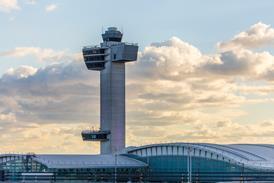ViaSat is confident that, working through partnerships, it can duplicate in Europe and the Middle East the type of Ka-band satellite-supported high-speed airborne communications service it is bringing to the United States.
The Carlsbad, California-based company recently signed a memorandum of understanding with JetBlue Airways to supply Ka-band connectivity systems to the carrier's fleet of Airbus A320s and Embraer E-190s beginning in 2012.
Installation and certification will be undertaken by JetBlue subsidiary LiveTV.
"The intent is to have this relationship with LiveTV whereby we jointly offer [Ka-band connectivity] to the airline industry. Clearly, the first targets are existing LiveTV customers, but they are not necessarily the only targets," says ViaSat strategy director Bill Sullivan.
The Ka-band service will be supported by ViaSat's current first-generation WildBlue-1 satellite as well as a new high-capacity ViaSat-1 satellite that is slated to be launched into orbit in the spring of next year.
"The service will be provisioned so that the passenger gets the same level of service in each region [the east and west coast]," says Bill Sullivan.
He notes that ViaSat is building the satellites "so that we can devote the capacity as needed to the airline customers" even as it meets its residential commitments.
"As we enter into deals, we'll make sure we can deliver the amount of capacity we need. We have a lot of capacity available. The notion is we'll build other satellites in the future as well. ViaSat-1 is not the end. It's the beginning," says Sullivan.
Eutelsat, a ViaSat partner in Europe, is launching a high-capacity satellite called KaSAT later this year "and we build all of the ground equipment for that and will be delivering all the terminals. The same thing we're doing here in the USA with JetBlue could be done in Europe as well. We also build the ground network infrastructure for a satellite - Yahsat-1B - going to launch in the Middle East so the same mobility business could be established there as well."
ViaSat already supplies a Ku-band connectivity solution to the business aviation community. But Sullivan says the economics behind Ka "are such that it is way less expensive to deliver the same amount of capacity to the customer, whether [the customer is] in a home with a dish or an airline with an antenna on the fuselage".
With specific regard to JetBlue's connectivity however, ViaSat is not discussing "how it will be charged or not charged. Pricing is not really being disclosed."
ViaSat has been tapped to provide the Ka-band antenna system for JetBlue. "Final selection of the antenna for JetBlue has not been made, but we anticipate that it will likely be a ViaSat antennaso most likely in-house."
Asked if ViaSat is pursuing a hybrid Ku/Ka-band solution, such as that being studied by Panasonic Avionics, Sullivan says the firm envisions exploiting the "existing, near-global Ku network" with this "overlay of islands of Ka-band", and that the natural extension of that would be a dual-band antenna that could switch between high-capacity Ka regions and over-the-ocean Ku regions. However, he stresses, ViaSat does not have any specific announcements regarding such a solution.
Source: Air Transport Intelligence news























